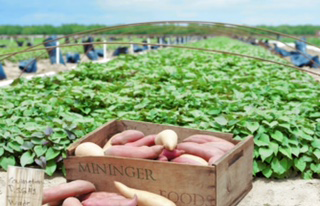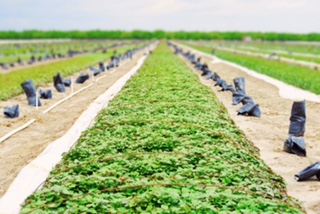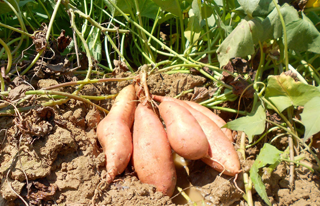This is Our Season
Hot Beds
All forms of agriculture to us are fascinating and multidimensional. The growth of a sweet potato is no different. Our season begins with seed. We purchase our seed from D & S Farms UC Davis agriculture department and some we save from the previous harvests to act as seed for the upcoming planting season. Mininger Farms needs close to 1,250,000 pounds of seed each year. When the second week of February rolls around, it’s time for hotbeds. The seed is carefully lined in a warm bed of dirt 2 inches thick, cotton, and another layer of dirt. This mixture accentuates the growth of the plant. Here our seed will sit in a blanket of warmth until April when the seed sprouts, called a “slip.”


Planting
The cutting of the “slip” is still done by hand and placed in a 1×1 basket. The baskets are then hauled to a seedbed prepared field. Here a transplanter is used, which consists of a tractor, twelve employees, and a 2,000 gallon water tank. As the plants/slips are manually placed in the planter, water is directly released to feed the freshly planted slip.
Irrigation
Close to three days later, drip tape is placed alongside the sweet potato plants and will disperse water evenly as needed. Irrigation can last anywhere from 90 to 120 days depending on the sweet potato variety. Mininger Farms is 100% drip irrigation, which is the most efficient way of water distribution for our crops.


Harvest

Full green plants are a beautiful sight to see while driving down old country roads come early July. To begin harvest, all the drip tape must first be removed. Sweet potato harvesters consist of a tractor that pulls a large trailer with a conveyor belt, bins for storage, and employees to hand pick and pack the full grown sweet potatoes. As the potatoes are rotated up on the conveyor belt, a Mininger Farms employee will place and sort the potatoes by size to into a designated bin.
Bins are labeled #1’s, Jumbo’s, Medium’s, and off grades. Sweet potatoes are layered until full. A full bin will roughly be 900-1200 pounds. Lastly, bins are off-loaded via forklift and placed on a flatbed truck to be taken to a packing shed for storage and distribution. To this day, Nathan still packs his potatoes with his good friends at AV Thomas Produce.



